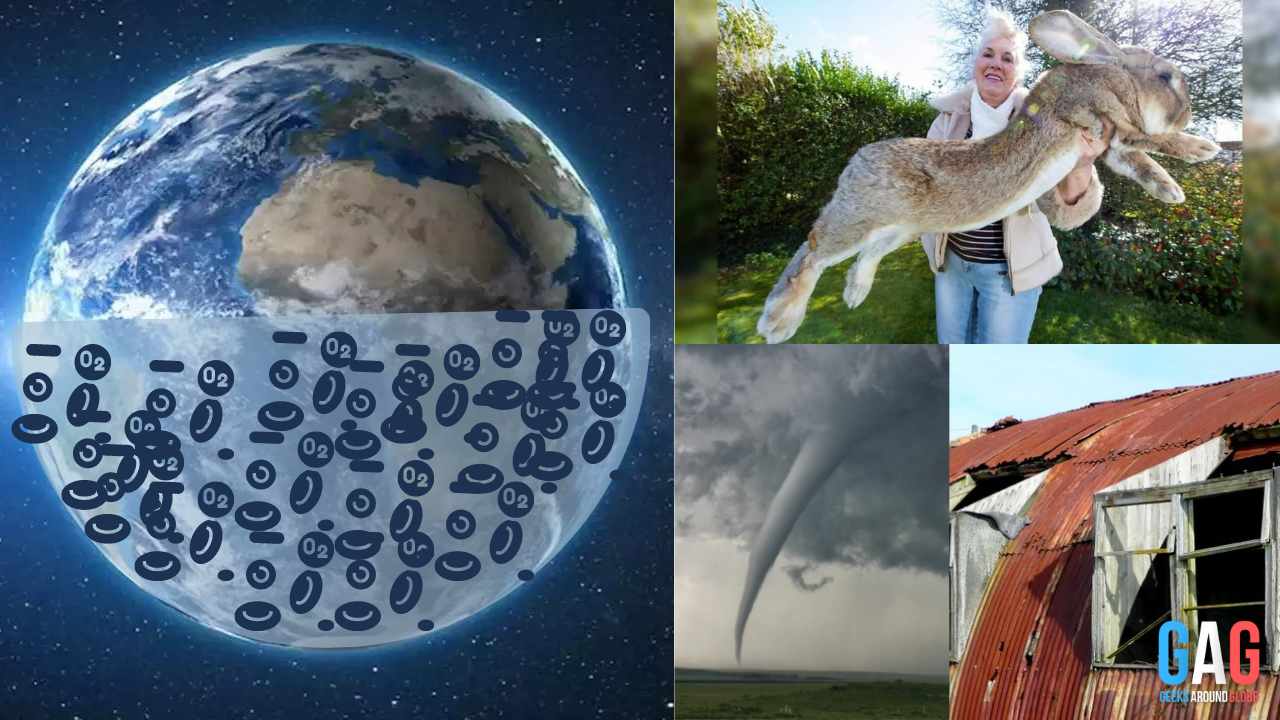What happens to a person If Earth’s Oxygen Levels Rise to 50%?
Our planet’s oxygen supply, currently stable at 21%, is a lifeline for all living creatures. But what if this balance were to suddenly tip, thrusting us into an environment with oxygen levels soaring to 50%? Such a hypothetical shift in our world will reshape it in profound ways. So today we are going to actually What happens to a person If Earth’s Oxygen Levels Rise to 50%. Stay with the article to see what will happen to you. Immediate Effects on Human Health Imagine the sensation of breathing in such oxygen-rich air that invigorates and courses through your lungs with newfound vitality. People would experience increased energy levels, enhanced mental clarity, and overall well-being. Yet, there’s a flip side. High oxygen concentrations can turn toxic,…
Our planet’s oxygen supply, currently stable at 21%, is a lifeline for all living creatures. But what if this balance were to suddenly tip, thrusting us into an environment with oxygen levels soaring to 50%? Such a hypothetical shift in our world will reshape it in profound ways. So today we are going to actually What happens to a person If Earth’s Oxygen Levels Rise to 50%. Stay with the article to see what will happen to you.
Immediate Effects on Human Health
Imagine the sensation of breathing in such oxygen-rich air that invigorates and courses through your lungs with newfound vitality. People would experience increased energy levels, enhanced mental clarity, and overall well-being. Yet, there’s a flip side. High oxygen concentrations can turn toxic, leading to hyperoxia.
Initially, individuals might not feel any adverse effects, but prolonged exposure could trigger symptoms such as headaches, dizziness, nausea, vomiting, and seizures. In severe cases, hyperoxia can be life-threatening, as it disrupts the body’s ability to efficiently exchange gases, leading to oxygen imbalances in the bloodstream.
Beyond the physical health effects, there would likely be psychological and behavioral consequences. The increased energy levels from abundant oxygen might encourage a more active and productive lifestyle. People could find themselves engaging in more outdoor activities and pursuing physically demanding hobbies.
In this high-oxygen environment, individuals might need to adopt various strategies to maintain their well-being. These strategies could include regulating physical activity levels to avoid overexertion, maintaining proper hydration to counteract the potential for oxygen-induced dryness, and adhering to recommended oxygen intake limits to mitigate hyperoxia risks.
Increased Fire Risk and Human Vulnerability
In this oxygen-rich world, fire would be a double-edged sword. On one hand, it would intensify the natural processes of decomposition and nutrient cycling. On the other, it would lead to more frequent and devastating wildfires, threatening not only our homes but also our lives.
Also, the heightened oxygen levels would make people more susceptible to inhaling smoke, which could be fatal in many cases. Advanced firefighting and fire prevention measures would be necessary to mitigate these new risks.
Changes in Human Behavior and Society
A world with 50% oxygen would not only change our environment but also our very essence. People would feel more energized and driven, potentially leading to increased productivity. The uptick in physical well-being might even prompt positive changes in lifestyles.
However, there could also be unintended consequences. The surge of oxygen might trigger higher risk-taking behavior and even aggression in some individuals.
Climate Changes and Their Impact on Humans
As nature’s balance tips, so too would our climate. Elevated oxygen levels could disrupt existing climate patterns. And it will lead to more frequent and severe weather events. Storms, hurricanes, and other natural disasters would become common occurrences. And this will be a significant threat to human populations.

Impact on plants
Under conditions of high oxygen levels and low carbon dioxide levels, plants face a complex set of challenges. Elevated oxygen levels can hinder photosynthesis, as oxygen competes with carbon dioxide for the same binding sites in plant cells. This interference can reduce the plant’s ability to produce essential carbohydrates, leading to slowed growth rates. And it will lead to human society to starvation.
Additionally, excessive oxygen can generate harmful reactive oxygen species. And it will cause oxidative stress and visible damage to plant tissues.
Effects on Animal Life and Human Interactions
The animal kingdom would respond diversely to heightened oxygen levels. Some species would thrive in the new environment, benefiting from increased energy. Others might struggle or even face extinction due to these rapid environmental changes.
Ecosystems would transform, potentially disrupting established food chains and ecological interactions. This, in turn, could lead to increased human-animal conflicts as animals adapt to the changing environment.
Conclusion
Our world is a delicate tapestry, and any thread pulled may unravel the whole. We must remember that our actions and decisions will play a pivotal role in shaping the future of our planet and the survival of all living beings.
Also read:
What If the Closest Asteroid Hits Earth at the Speed of Light?






